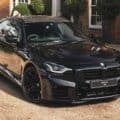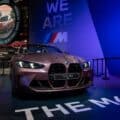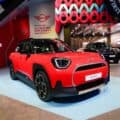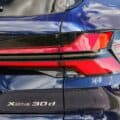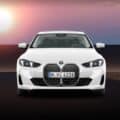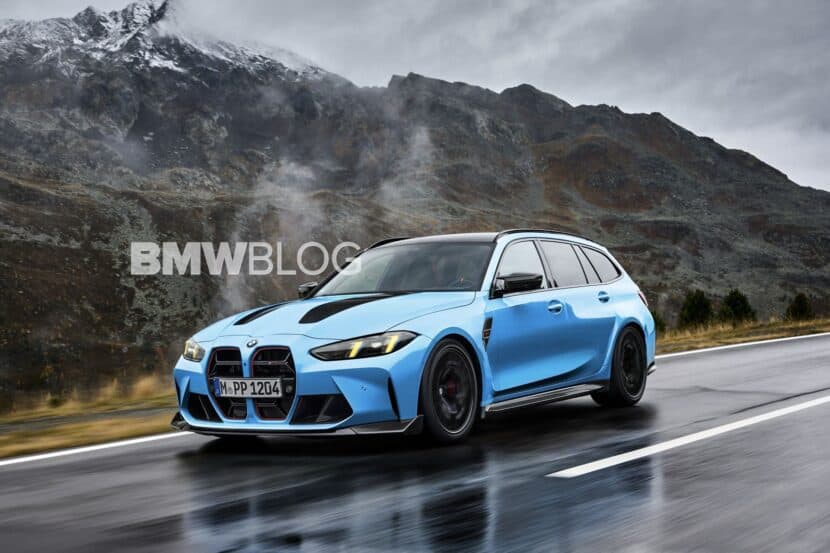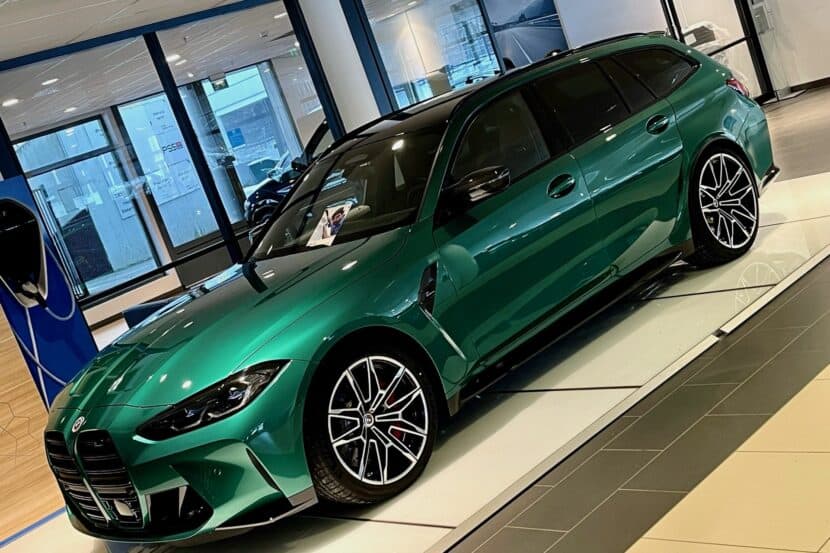Even when it was released in 2003 the M3 CSL was an impractical car. The front seats’ backrests are set permanently in a rather upright position and with an overly firm ride which can be rather harsh (to, put it mildly), this is definitely not an everyday car. It came with virtually no accessories, for a R940 000 car you had to tick the xenon lights and park-distance-control boxes as extras. You were also required to make it known if you wanted air-conditioning and a radio and that was as generous as it got. In an emissions free, fuel efficiency obsessed society we live in, the CSL almost seems totally out of place.
But did Paris need the Eiffel tower, did New York need the Statue of Liberty (which by the way they got from the French), and what has the Brandenburg Gate ever done for Berliners? And yet we cannot imagine a world without them and the same can be said about the CSL, for on the right roads under the right conditions this is motoring Nirvana. So is it worth investing in one, or is one’s hard- earned cash better left offshore?
Its purposeful ducktail rear is adorned with not one but two of the most legendary badges in BMW history, M3 and CSL (Coupe Sports Lightweight). The M3 CSL can trace its linage directly to the 3.0 CSL. Launched in 1971 as a homologation special it was based on the CS model but manufactured from lighter gauge steel, with aluminium doors, bonnet and bootlid, the front bumper was absent and the rear was made from plastic, while the front door windows were crafted from thinner glass. Far less sound proofing was used and the tool kit got the chop, all these changes amounted to a weight saving of 200kg.
Development continued and in its most hardcore form it sported a deep front airdam, air guides over the front wings, an aerofoil at the top of the rear screen and a mammoth rear wing, resulting in what is commonly known as the Batmobile. Between 1973 and 1975 167 Batmobile versions of the CSL were made, more significantly in its first year in 1973 in Batmobile-guise it won the European Touring Car Championship and won another five ETCC titles thereafter, ending in 1979. When sold new in 1973 the CSL cost the princely sum of £7400 which could have bought you two Jaguar E-types or a XJ12 and an Alfa Romeo 2000GTV. Today a good one will set you back at least £30K while rare right-hand drive models (of which only 500 were made) could set you back somewhere north of £65k while those with a racing pedigree and victories will easily reach £80k and beyond if you can find one.
The E30 M3 is also a homologation special, developed from the ground up as a racer with the specific intention of competing on the track and to annihilate its competition. The 5 and 6 series had taken over the reins from the CSL and both had acquitted themselves well but BMW needed an outright winner. Paul Rosche, BMW engineering maestro was tasked to develop a suitable engine and what he came up with is totally ingenious – a 2302cc four cylinder, 16-valve dual overhead cam. For all intents and purposes the S14 engine is two thirds of the M88 motor (although the block is based on the cast-iron M10 engine) developed for the M1, the M635CSi and the South African only 745i, this engine was further honed for the E28 M5 (second generation) to become the S38. BMW’s initial intention was to sell 5000 units to ensure eligibility for racing, but such was the demand that it ended up manufacturing three times this amount during 1986 – 1990.
The M3’s war paint clearly defines its intentions, (it is rather different to its regular 3 series brethren) with flared wheel arches to accommodate wider rubber, and at the rear sits a large wing on a raised bootlid, with a separate cowling over the rear window aperture, all of which help improve the aero- dynamics. All of this translated into the M3 being the most successful Touring Car racer of all time, with more than 1500 individual victories and more than 50 international championship titles.
These included a World Touring Car Championship, two European Touring Car Championships, two German Touring Car Championships, several other individual European titles, Nurburgring 24 Hours, Spa 24 Hours and even a few Rally titles.
When sold new in 1985 the first edition of the M3 cost £22 750. Today the final iteration of the first M3 known as the Sport Evolution could very easily sell for £65k and more.
In 2012 BMW Classic live magazine interviewed CEO of BMW M Gmbh Dr. Friedrich Nitsche as part of a feature on BMW M’s 40th anniversary celebration, one of the questions posed to him was – “Which model best embodies BMW M?” His reply, “From my own personal perspective, the BMW M3 is the very incarnation of BMW M, specifically the BMW M3 CSL. Weight, engine, design, precision, emotionality, overall handling and sheer driving pleasure – this model perfectly embodies BMW M.”
The M3 CSL is the closest you will come to the Holy Grail of BMW, that title has been reserved for the first version of the M3, so pure in its execution that many enthusiasts consider it the best handling driver’s car ever. The CSL has a 3.2 litre engine with 265 kilowatts on tap at 7 900rpm and 370 Newton metres of grunt at 4900rpm. It accelerates from 0 to 100km/h in just 4.9 seconds and is limited electronically to 250km/h. The car was only offered in two distinct metallic colours, Silver Grey and Black Sapphire, Silver Grey being the most common as it accentuates the carbon fibre roof and front splitters so much better.
When it first sold in South Africa the CSL cost R940 000, which was virtually R400k more that the standard M3. Only 1383 (Ferrari produced 1315 F40s) were made, production of left-hand vehicles started in May 2003, followed by right-hand drive vehicles in June and production ended in December 2003. Of the 1383 vehicles manufactured, 542 were right-hand drive of which 422 went to the UK, while South Africa received the second highest allocation of 65 vehicles. The total number of left-hand drive vehicles was 841 and it was never officially sold in the United Sates.
There were a dozen or so pre-production models and as recent as June 2010 Classic Heroes in the UK sold a right-hand drive model on behalf of BMW M Gmbh with 270km.
The CSL is based on the third generation M3 (E46) but is 110kg lighter; it is the first M car that made extensive use of lightweight composites both on the outside and inside the cockpit. It is also an M car pioneer when it comes to the carbon fibre roof, which substantially reduced its centre of gravity.
On the exterior it is decked out in carbon fibre reinforced plastic (CFRP) bumpers, front splitters, rear diffuser, while the beautiful sculpted bootlid is made from sheet moulded compound. The doors and bonnet on the other hand are made from aluminium. The interior is also swayed in carbon fibre which includes the door cards, centre console and the lightweight bucket seats which is covered in a combination of Anthracite “Reflex” cloth and Amaretta (synthetic suede). The sporting theme continues with the steering, handbrake and gear-lever which are covered in Alcantara, reminiscent of the first M3.
The M wizardry also included a reworked suspension with improved geometry and setup in terms of shorter springs and stiffer dampers, and a sharper steering. The CSL also boasts a larger diameter inlet manifolds, re-profiled camshafts and exhaust valves, with an exhaust manifold unique to the CSL, while the entire exhaust is made of thinner gauge metal. The deep front airdam feeds the carbon fibre airbox that dominates the engine bay, the air is fed directly into the engine, producing its signature howl that reverberates through the entire car.
The CSL sits on unique 19-inch lightweight alloy wheels another signature feature of the car. Most cars were delivered with Michelin Pilot Sport Cup tyres, semi-slicks that were non-starters in the rain and cold weather (buyers that went for these tyre options were required to sign a disclaimer) but under normal circumstances gave the car enormous grip and superior handling. It has larger diameter brakes of 345mm in the front and 328mm at the rear but with only single piston brake callipers which are known to fade only after a couple of laps on a track.
The CSL was only offered with the SMG transmission with unique software which featured launch control and an M Track Mode switch found on the steering wheel.
This fine example which is featured is owned by Feroz Ebrahim, BMW enthusiast and racer in the hotly contested BMW Car Club Gauteng Racing Series. We decided that the most appropriate place to photograph this M thoroughbred is in the “City of Gold”, Johannesburg also known as Egoli. As we head into the city we take the Village Road/Selby offramp which makes a complete 360º turn, I expect Feroz to brake, instead he feels it’s an opportune moment to show exactly what the CSL is made of, and continues to drive the accelerator into a horizontal position. The rasp engine note has a kind of mechanical snarl to it at full chat, that sounds like ice being grated, the best sounding motor as attested by many a motoring scribe. I can feel the lateral Gs taking hold of my body which has nowhere to go as it is trapped in the clutches of the hybrid suede bucket seat. There is no margin for error on this bend, no lifting off the throttle, the only way around it is to keep on accelerating, the CSL shows complete composure and its handling capability is as sharp as the business end of a Samurai blade. I am not sure which part of my body has endured more fear, my ears, my eyes or my gut. The pilot is so completely dialled in he doesn’t even notice that I have broken out into a cold sweat. This is truly an astounding piece of kit, more than the sum of its parts, a real tour de force.
The car does have its idiosyncrasies though. Why shave off all that weight and then install electric windows, and park distance control? After all, this is not a suburban shuttle. Some argue that a manual gearbox would have been more purposeful and would have saved 10kg over the SMG ‘box. The single swing piston brake callipers are a chink in the armour of a rather well put together package. Maybe this is all part of the mystic and allure. Make no mistake however, this is not an everyday car. It is much better suited for day break raids of your favourite back roads or brawling on a track.
BMW has turned its back on normally aspirated engines, fully embracing the turbo age, the ubiquitous in-line six cylinder engine, which made the Bavarian company such a motoring icon both on the track and the road is no more, yet it is one of the biggest draw cards to the CSL.
A few years ago BMW’s M division swore that it would continue to only produce normally aspirated M cars, today the M division has transgressed these claims and even produces diesel turbo-charged cars. The biggest transgression is yet to come, the next 1 series is definitely going to be a front wheel drive model. All the more reason to get what is already considered by those in the know as a classic today.
Today good examples start at around the R450k mark, pristine examples with very low mileage (garage queens) can fetch above R500k but those are few and far between, bearing in mind that only 65 examples came to South Africa. Not so long ago when the world financial markets crashed CSLs were selling for as low as R300k and less, depending on what you were looking at. But time has moved on and values are on the rise and will continue to climb as motoring enthusiasts, journalists and the larger BMW public come to the realisation that less than 1400 examples were made and that BMW will never come close to producing something this focused on the driving experience. The M3 CSL is an incarnation of the 3.0 CSL and the M3, cars steeped in legend and mystique. So by how much will values increase by is hard to say, but if its two ancestors are anything to go by, values can only go up and you could never lose money. If my assumptions are correct values will at the very least double in the next ten years. It is however imperative that you buy the right car: the less owners the better, with a complete service history at the very least, the more detailed the documentation of the car the better, which include all additional receipts for work carried out outside of the normal service routine as well as upgrades that have been done. Awards and prizes won at track days and Concours events as well as the documented history all build on the provenance of the car which ultimately increases it value; the same should be done once you take ownership of the car.
One other factor that will weigh very heavily in the value stakes is the number on the plaque positioned on the sill, only two numbers matter here 1 and 65, which brings us to the pristine example which is featured here, it happens to be number 1 of 65 which automatically makes the car more desirable and immediately pushes up the value.
If you intend on investing in one make sure that the vehicle is thoroughly inspected by either a dealer or an independent specialist, verify the documentation with the dealer from which the car was bought and double check the service history ensuring that the relevant software upgrades have been done and that any recall issues have been taken care of. One significant issue of concern is the rear sub-frames that are known to crack.
These cars will become even more sought after the world over in years to come and nothing stops you from selling the car to other right hand-drive markets such as the UK, Australia, New Zealand and even Japan, although the latter might be a more difficult process. It is however interesting to note that certain Japanese BMW enthusiasts will stop at nothing if their minds are set on a particular car, case in point, only two right-hand drive BMW M3s (first generation cars were only produced in left-hand drive therefore certain right-hand drive markets like South Africa and Japan never got them) were ever produced for two very special Japanese clients.
Special thanks to: Ron Silke | Photography: Oliver Hirtenfelder | TopCar




